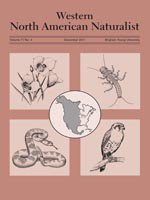We analyzed the effects of a second-entry prescribed fire in a mixed conifer forest in Grand Canyon National Park, Arizona, 14 years after the initial burn to assess whether restoration and management objectives were achieved. The surface fire had little effect on large overstory ponderosa pine, Douglas-fir, and white fir trees and did not change total tree density or basal area. The fire reduced the overall density of conifer seedlings <30 cm tall by 87%, but had a smaller effect on seedlings >30 cm tall and on sapling density. The fire reduced litter depths by 33%, duff depths by 23%, fine woody debris by 21%, and coarse woody debris by 44%. These effects were mostly consistent with restoration goals in mixed conifer forests and continue to move this forest toward reference conditions. Grand Canyon National Park staff now considers this forest to be in “maintenance burning,” meaning that they plan to allow natural ignitions to maintain forest structure in the future. This forest is now more resilient to projected increases in fire size and/or frequency under conditions of a warming climate. This example illustrates that use of prescribed fire in a ponderosa pine—dominated mixed conifer forest can be consistent both with restoring historical conditions and with managing for resilience under altered disturbance regimes accompanying a changing climate.
How to translate text using browser tools
1 December 2011
Effects of a Second-Entry Prescribed Fire in a Mixed Conifer Forest
Daniel C. Laughlin,
John Paul Roccaforte,
Peter Z. Fulé
ACCESS THE FULL ARTICLE





